Post
Fishing Tips for Beginners- Immediate and Advanced by Ontrackfishing.com
Fishing Stories | California bigfish_writer PM
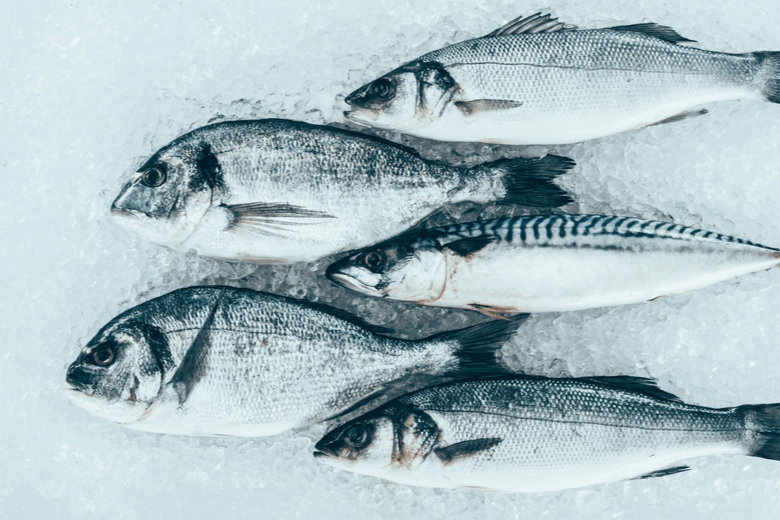
Fishing tips and tricks. If I was to think about it long enough, I could sit for weeks and rattle off countless tips and tricks just for fishing the surf.
So why 40 fishing tips and tricks? To be honest it’s a pretty arbitrary figure. One thousand times that many tips would still leave plenty left unsaid.
Fishing offers a lifetime of discovery. That’s why we love it.
After 40 plus years of fishing, I am still surprised at how much more there is to learn and how much I don’t know.
The learning never stops – at least it shouldn’t. There’s are as many ideas and approaches to fishing as there are anglers.
The following 40 tips and tricks are for all types of anglers. They’ve been broken down into categories and edited to be as concise as possible.
Let’s call it a quick reference guide to the tips that made a significant contribution to my fishing success.
Tips For Buying Fishing Gear – The Basics
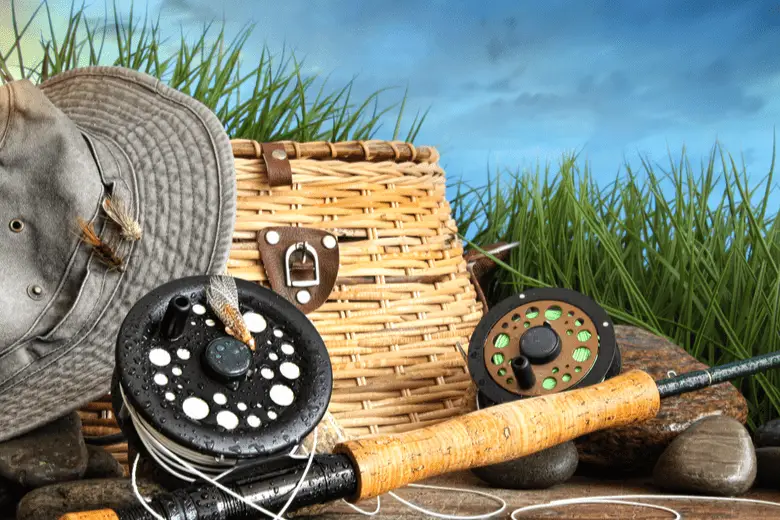
1. Head To A Tackle Shop
You can get great fishing gear prices online. However, so much about fishing is feel, and feel is X-factor, subjective and difficult to put into words.
Before you lash out on a major tackle purchase, head to a tackle shop first and check it out – feel it.
Talk to a professional. A good one has a wealth of experience and information to share.
As a courtesy for their insights, make sure you buy something from the shop, a lure or some terminal tackle.
They may even match the price you found online for the equipment you’ve got your eye on.
2. Make Considered Purchases
There is no need to spend a fortune to get out fishing. Ten bucks will get you out and amongst the fish.
A handline, some hooks and sinkers, some fresh bait, and you’re fishing.
That said, most of us want the best rod and reel we can afford.
A good rule of thumb for purchasing rods and reels etc. is to make considered purchases and aim for the best quality your budget will permit.
Cheap and cheerful is not recommended and is usually a false economy.
Unfortunately, there are plenty of manufacturers that will gladly take your money for what amounts to garbage products.
Stay well clear of the bargain basement unless you know what to look for.
3. Check For Quality Assurance
Check the warranties. So many anglers fail to do this and get burned.
A lengthy, all-inclusive replacement warranty is a sign that the manufacturer stands by the endurance and quality of their products.
You will sometimes find the less prominent brands offer great warranties. It’s definitely worth checking out their products.
You don’t have to go for the ‘big brands’ for quality assurance.
4. Be Cautious With Reviews
Many anglers, new and experienced alike, check online chat groups for information, feedback and reviews about specific fishing equipment.
In fact, there is so much information available it can be overwhelming.
Be cautious. The internet doesn’t care about bias. Nor can you easily establish the credibility or experience of the person from which you are getting the information.
Just because the majority of a chat group likes a particular reel, it doesn’t mean you will. Refer to tip number one.
Tips & Tricks For Safely Fishing The Ocean Rocks
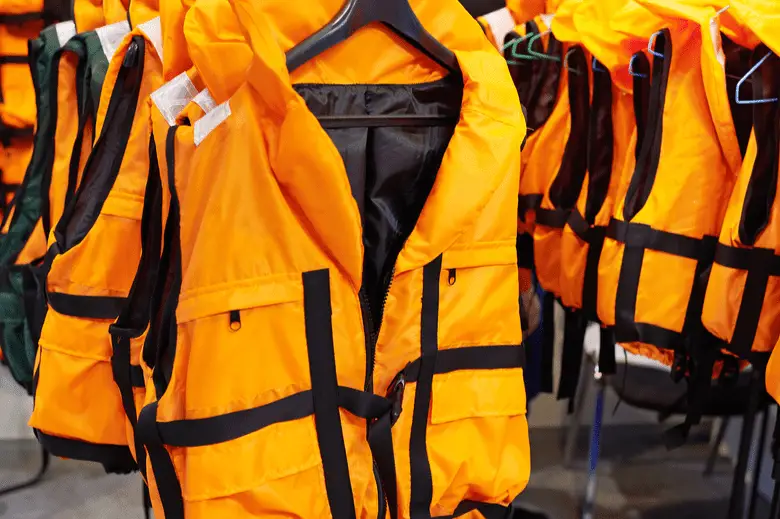
5. Wear A PFD
Fishing the ocean rocks is exciting and incredibly rewarding. It can also be very deadly.
We lose so many anglers unnecessarily because of poor decisions made while fishing the ocean rocks.
Wear a PFD, (personal floatation device). There are plenty of great designs that allow you to move about and fish unencumbered. It may well save your life.
Wear cleated boots or shoes. There are fantastic designs made especially for fishing the rocks. Again, they may well save your life or serious injury.
6. Don’t Rush
Whenever I go fishing, I’m champing at the bit to hit the water – nigh on running. This is a bad approach when fishing the ocean rocks.
Firstly, moving hastily across a slippery uneven surface is a recipe for disaster. Take it easy and focus on sure footing.
Secondly, and most importantly. Take 20 minutes and observe the spot you’re about to fish.
Get a feel for the wave patterns and intervals. Watch the groundswell. If there is a little whitewater crossing the rock on which you want to stand, then it’s ok.
If it’s thick and green, even if only just above ankle height, you can’t fish that spot safely.
7. Keep Aware Of The Ocean
It might sound obvious but plenty of experienced anglers make this mistake. Never turn your back on the ocean when rock fishing.
If you’re rigging, get in the habit of looking up from the task every few moments.
Most importantly, ensure your peripheral vision is tuned to the ocean. A wave can come in seconds and sweep you and your kit away.
8. Don’t Go It Alone
Never fish the ocean rocks alone. Again, this is a mistake many experienced anglers make.
Tell people exactly where you are going and when you will return. Always try and return when you say you will.
If you move spots, call someone and let them know, send a text, it takes no time at all.
Remember, fishing the ocean rocks claims many lives every year. These simple precautions are a must as they will likely save your life.
Tips For Fishing The Surf
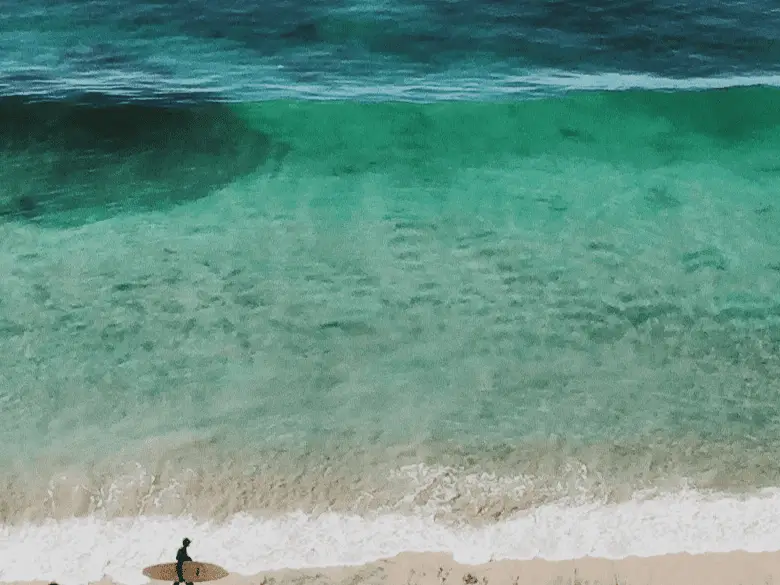
9. Observe From Elevation
If it’s at all possible, try and observe the beach you’re about to fish from elevation. Sand dunes and headlands can be great for this.
From a height, you can better observe the gutters, holes, and channels that hold fish. A good set of binoculars can be very handy here.
10. Waves Are Your Friend
A flat surf is usually a sign of few fish. Most surf dwelling species love the waves. Waves offer cover and stir up plenty of food.
While you will catch fish on a flat day, wave action is definitely the preference.
Keep in mind you can have too much of a good thing, however. If the surf is big, messy and powerful, your chances are better in the river.
11. Look Nearby
Great fish can be sitting right at your feet, literally. There’s plenty of food on the shore break for smaller fish.
That means there are likely to be larger fish chasing the smaller fish.
Often there is no need to cast a country mile. You may well be casting over the catch of a lifetime.
12. Fish Lighter
Further to tip number 11. Often, we don’t need to use 12-foot rods and big 6000 plus reels when fishing the surf.
If your target is a smaller species and the wave action and wind permits, do yourself a favor – fish lighter for comfort and a more thrilling fight. A 7-foot rod with a 3000 reel is frequently all you need.
What’s more, you will likely get more hits fishing a lighter rig.
Tips For Using Live And Flesh Baits
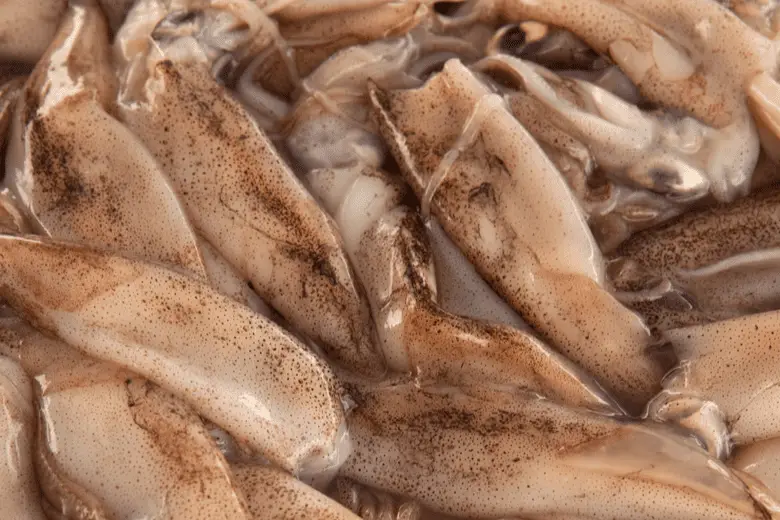
13. Use Live Bait
Fish like their meals to be alive. It’s their preferred menu. If you are determined to catch quality fish, there is no better bait than live bait.
14. Big Bait For Big Fish
Use big baits for big fish. This may sound obvious, but you would be surprised to hear how many enthusiastic anglers ask, “How do I target big fish?”
In the saltwater the answer is simple. Use big live baits. There is no surer path to hooking into massive fish.
15. Use Fresh Bait
We’ve all had to use frozen flesh baits at some point. More than likely we still do.
However, your chances of getting good fish improve dramatically with FRESH bait.
This value of this tip can never be overstated. Fresh baits catch more fish more often.
16. Go Local
Shrimp and Squid are outstanding bait. To ensure you’re getting the freshest available, buy food grade shrimp and Squid from your local supermarket or local fish co-op.
If they’re not labeled ask where they were caught. Local produce is definitely the freshest.
Avoid imports as they have likely spent plenty of time on ice. You don’t know the difference, but the fish sure do.
Tips & Tricks For Fishing Structures. Rivers.
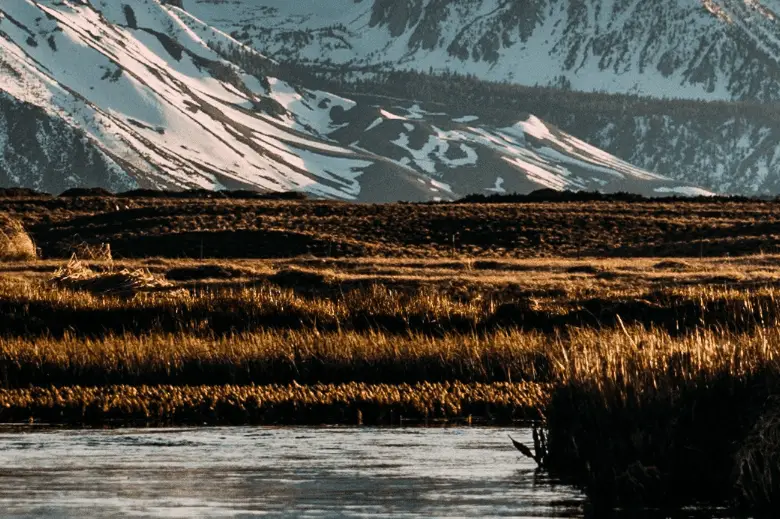
17. Be Careful With Jetty Pylons
Bridge and jetty pylons hold fantastic fish. Problem is, these pylons are encrusted with oysters and barnacles that laugh at your expensive abrasion resistant leader.
Even experienced anglers come unstuck as there hook-up darts for cover, severing the leader in a millisecond.
Of course, our drag is wound up to the maximum in an attempt to pull the fish away from natures line cutters as quickly as possible. But often, this is what does the damage.
Our line is so tight and under so much pressure, the second it hits a barnacle it’s cut. It happens in a split second.
Try letting off the drag a little. Yes, there are risks, and your leader may well come back with plenty of abrasions, but it’s more likely to have a fish connected to it.
18. Fish Where There Is Cover
Your motoring along a fairly baron stretch of river. There’s not much structure to poke your lure at.
You see that lonely tree branch sitting just above the water surface? It doesn’t look like it would hold a tadpole.
Fish it. If only a couple of casts. Where there’s not much cover, you’ll find that fish will stop by just about anything that might act remotely as cover.
You should stop by it too. It can deliver surprising results.
19. Cast A Lure With Weedless Hooks
Often the banks are lined with a matted mess of foliage, twigs, branches and big Lilly Pads.
Cast a lure with weedless hooks directly onto the structure. Then drag it carefully into the water. This is a great option for lures that have frog, bug or lizard profiles.
Fish are waiting by this type of structure for their prey to enter the water this way.
You might lose a few lures as you hone your casting skills, but once you’re Dead Eye Dick, this method will produce awesome fish.
20. Get A Kayak
Buy a kayak. OK, kayaks can be expensive – save up, it’s worth it. A kayak allows you to approach structure you simply can’t get to in a boat, even small boats for that matter.
The kayak allows you to navigate shallow waters and enter tributaries that are loaded with fish holding structure. These places are also loaded with outstanding fish.
The kayak also allows for a stealthy approach, this is necessary for these tight, often very quiet places.
Fish become cautious when they hear unfamiliar noises. A less cautious fish will attack with ferocity.
Fishing Tip – Know Your Fish

21. Learn From The Best Books
The internet holds plenty of information about fish species. However, there’s nothing like a good book or three, for learning the habits of different fish species.
All fish have behaviors unique to their species. Learn it inside out. It’s a sure path to catching more.
If you want to learn about the behavior of water then check out this useful book here.
22. Learn Local Fish Behaviors
Geography and habitat will impact fish behaviors. The fish species books you have just read provide an excellent overview of fish behaviors.
However, there’s nothing better than observation and critical thinking. Watch like a hawk.
Talk to the locals. Learn the fish behaviors peculiar to your local fishing haunts.
23. Understand The Anatomy Of Fish
Have a basic understanding of the anatomy of the fish species you hunt. The spines, fins, teeth and gill rakers of fish can inflict serious wounds when you’re handling your catch.
Know how to avoid them.
Secondly, and just as importantly. Understanding their anatomy ensures you do the least damage possible to the fish you intend to release.
Poor fish handling technique can seriously compromise the chances of the fish you have caught living to breed and fight another day.
24. Be Careful Of Toxic Fish
Some fish should not be eaten, particularly once they reach a certain size. Many fish carry worms and parasites.
Ciguatera, however, is a naturally occurring very nasty toxin carried in a number of fish species.
This toxin is highly dangerous to humans when consumed. Reef species and large pelagic species hold the higher concentrations.
Good publications about fish species will indicate if the fish is a likely carrier. Big tip. If you don’t know the species, don’t eat it.
Fishing Tips For Tides, Times And Weather

25. Dusk And Dawn Are Best
If you intend to cast surface lures at the topwater, particularly in the rivers and estuaries, dawn and dusk are by far the best times.
If it’s raining or overcast, topwater chances improve significantly if you’re stuck having to fish through midday.
26. Check For Dropping Pressure
Keep an eye on the barometer. Listen to the weather forecast for dropping pressure. Invariably, fish will go on the chew when the pressure is dropping.
The bite may not last very long, but it will be a thrill a minute while it lasts.
27. Local Tide Knowledge Is Key
In my experience, there is no reliable general rule of thumb for tides. You need to talk to locals and get out and experience the local area yourself.
Obviously, there are practical concerns. Is the tide too low to navigate a boat safely or is there insufficient water for the location to hold fish?
Those logistical concerns aside, tidal influence on your fishing can be very local and species-specific.
For example. I love to catch Whiting from the beach for the table. The beach I fish near home will deliver the goods 2 hours after the tide begins to recede.
800 miles up the coast, my other favorite beach will only start to deliver 4 hours before the tide peaks.
Where tides are concerned there really is no substitute for local knowledge.
28. Get Some Quality Weather Gear
The fish really don’t care if it’s raining, they’re already wet. Get some wet weather gear and fish the rainy days.
Fishing success is all about time on the water, and work tends to encroach badly on fishing time.
Don’t let the rain ruin the one day per week you may have to fish. Often, rainy days create ideal conditions that will keep fish on the chew for longer periods.
Great Fishing Preparation Tips
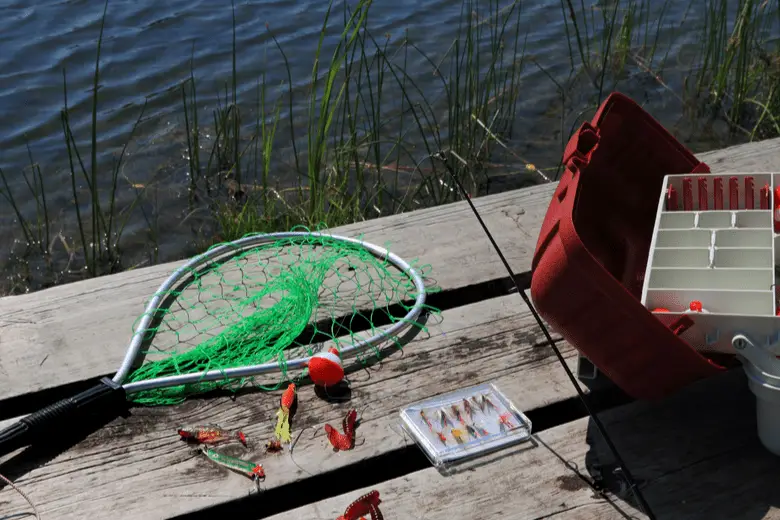
29. Organize Your Gear
An organized angler catches more fish and saves money. When your gear is sorted into logical places in tackle bags & boxes, rigging up, lure selection and gear changes happen much faster.
Importantly, you lose gear in a messy tackle box. Often, we will replace lures and terminal tackle we thought we’d run out of.
Turns out, there was a great stock buried deep in your messy tackle bag.
30. Rig Before You Hit The Water
If it’s at all possible, rig before you hit the water. My fishing buddy Pat never does this. When we hit the water, I’m ready to cast.
Pat, pedantic as ever, is at the back of the pickup making sure the knot’s on his several rigs are of showroom quality.
In the meantime, a half hour has passed, I’ve taken advantage of a passing school of whatever and picked up 6 fish.
By the time Pat casts his first bait, the fish have moved on. If I had a dollar for the times this had happened, I’d be retired and very wealthy.
Great Tips For Selecting Fishing Line
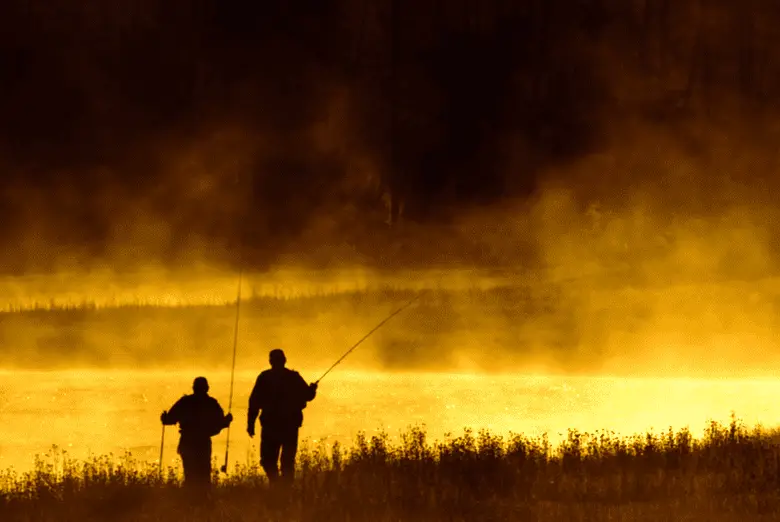
31. Fish Mono
If you’re fishing the ocean rocks or deep in barnacle encrusted structure such as oyster racks, fish mono.
I’m certain to get some argument here, but time and again I am proven right. Heavily loaded mono copes better with the sharp stuff than heavily loaded braid.
I said it before. Better bured than busted.
32. Test Braid At Your Local Tackle Shop
The selection of braids available now completely does my head in. What’s more, the price of some of them, indeed many of them, is nothing short of second mortgage material.
I’ve used braids that people have raved about in chat rooms and been completely unimpressed and left with a much lighter wallet.
You have little choice but to experiment. Go to a tackle shop and FEEL them. Reading the blurb on the packet is not enough.
They all claim to offer legend knot strength and abrasion resistance…blah blah. With plenty of spools sold completely sealed, ask the pro to open it. Feel it, tie a knot.
Start at the upper entry-level braids and test them until you find the braid that suits your application.
Through testing and experience, you will come to learn that different braids perform better for specific applications.
This is where a trusted tackle shop pro can be worth their weight in braid. Explain your application in detail, take advice.
Caution. Unscrupulous dealers won’t push you toward the most expensive braids, they will advise on a product for which they have the highest margin of return.
A good pro will guide you accurately, drawing on all of their knowledge and experience.
Fishing Lure Hacks
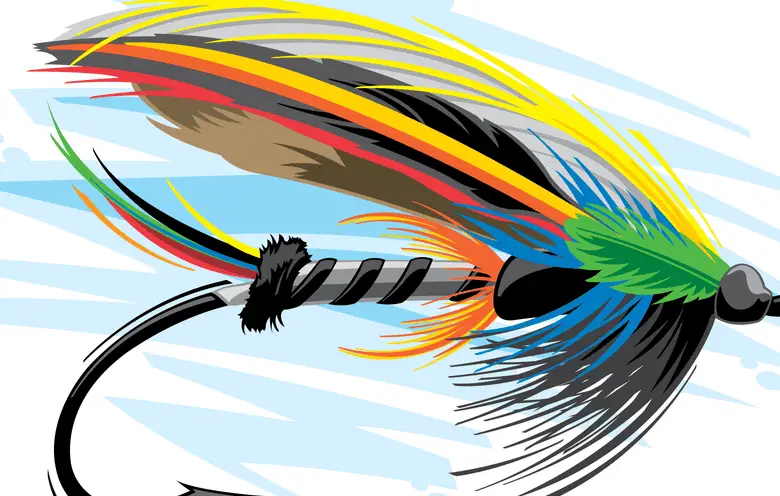
33. Tin Foil Trick
As a kid, I loved casting metal slices into schools of Mackerel….Still love it! With a non-existent budget in my tender years, I was devastated to lose my favorite slice.
However, with an elongated sinker, wrapped in tin foil sitting above a treble or single hook, I was back in action and achieving identical results.
34. Using Thin Gauge Steel Hooks
Smaller lures will often attract the interest of pretty big fish. Problem is, the hook sizes are likely not appropriate for a larger class of fish.
Upping the size of your hooks can have devastating effects on the action of the lure if you’re not careful.
There are hook brands, both single and treble, constructed from very thin gauge steel delivering the same, if not better strength than much bulkier hooks.
Carry a stock of these in your kit. With these types of hooks, upsizing will have a negligible impact on the action of your lure.
Tips For Selecting Baits
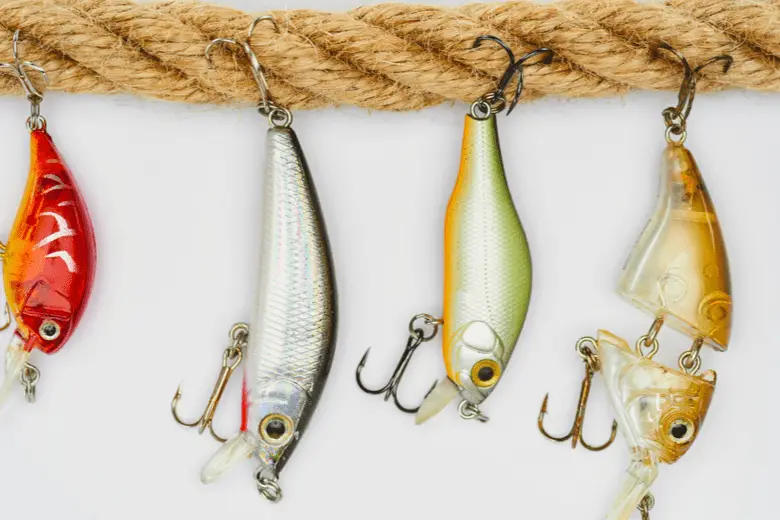
35. Experiment With Different Lures
As a rule, I nearly always select my lures based on mimicking the preferred local and seasonal menu of my target.
For example, If frogs are high on the diet of the local species I’m hunting, I’ll choose a frog profile.
If I’m fishing in an area where crabs are an important part of the local diet, I’ll fish a crab profile. It’s logical.
Often I have fished this logical way and come up fishless. So, I do have an exception to this rule that has proven fruitful when the obvious has failed.
Instead of matching the local diet with your lures, contrast it. It’s no guarantee but It has yielded some outstanding results after countless casts to no avail using more pragmatic methods.
36. Examine The Content Of Fish Stomachs
Examining the contents of fish stomachs reveals invaluable information about what they are eating.
I learned this tip as a kid and was sure to teach my daughters early…much to their fascination.
It was doing this that taught me that predatory fish will eat just about anything alive that they can get their mouths around.
It was this technique that convinced me to carry two rigs with me every time I went fishing.
One rig for chasing my target and a second heavy rig for baiting up with any fish I caught that was undersized.
It was this technique and knowledge that led to my first big fish, a 33-pound Shovelnose Shark that took a 7 inch Whiting with a 6/0 place just above the lateral line.
30 odd pounds of fighting Shovelnose was a lot of fish for a scrawny 7 year old.
Check their stomachs. Bait up with what the fish are eating locally.
37. Remain Scentless
Dirty hands can turn a wonderful fresh bait or your favorite lure to instantly useless. Remember, a fish has a highly attuned sense of smell.
Two of the worst offenders are sunscreen and insect repellents. When they’re smeared on your lure or bait, they become significantly less attractive.
For those that fish from a boat, the most common contaminants are petroleum products. Rarely will I have a day on a boat where I don’t come in contact with oil or grease.
The toxic smell of these products is transferred directly to your baits – it’s a massive turn off for fish.
Having read this, you’re probably about to add soap to your tackle box. Not so fast. Your sanitary products like soap and deodorants are also a turnoff for fish.
Use scentless, natural products to clean your hands. Hunting suppliers stock these types of products and they’re essential for the diligent angler.
Important Tip For Catching More Fish
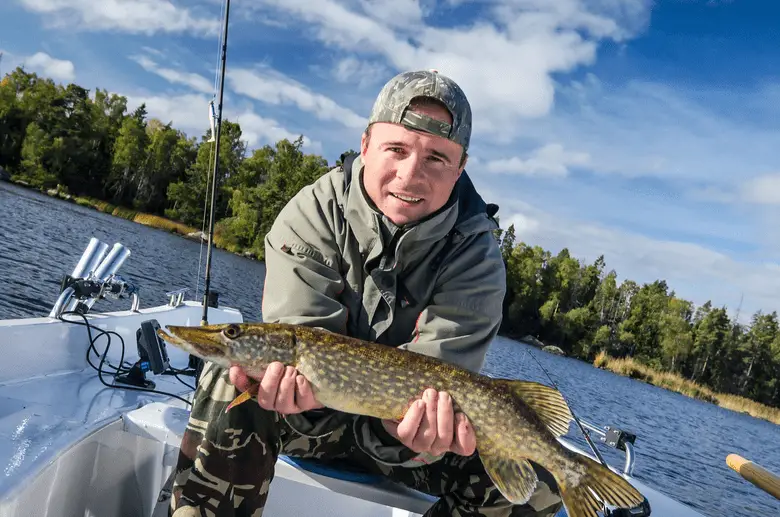
38. Spend More Time On The Water
If there was one tip that stands well above any other tip I have ever been given. It’s this one.
There is no substitute for time on the water. If your line’s not wet, you can’t catch fish. Make the time. Get dedicated.
It’s only a very small percentage of anglers that catch the majority of the fish. Why? Because they spend the time on the water and forever remain humble students of the sport.
2 Most Critical Fishing Tips
39. Catch And Release
Catch and release. It fills my heart with joy to see the growth of catch and release in the last decade.
Conversely, it fills my heart with dread to see the lists of fish on the endangered and overfished lists.
Keep a few and feed the family. It’s one of the great joys of fishing.
However, make it a rule to return the majority of your catch, and never keep big ones, they’re the prolific breeders.
We can’t rely on government regulations to protect our fish stocks. It’s entirely up to us to ensure our grandchildren’s children can enjoy fishing well into the future. The responsibility is ours.
40. Be Aware Of The Law
There are laws for everything, and fishing is no exception. The tricky thing is that fishing laws vary significantly from state to state and across the world.
Always carry a fish measuring mat or tape measure with you. ALWAYS.
A poor guess can mean a very expensive mistake. Taking undersized fish attracts a very heavy fine in most places.
There are often limits to catching that relate to fish numbers generally or to numbers of specific species or species sizes.
The best way to make sure is to check online. There will be a recreational fisheries website for every state. Check it out.
Local tackle shops will also have printed material about rules and regulations. Adhere to them. Some fines may cost you more than you earn in a year.
Here’s a tip. The rules are there for a reason, generally to protect the future of fish stocks.
It’s not the fines that should motivate you to follow the rules, but the future of your sport.
https://www.ontrackfishing.com/fishing-tips-tricks-beginners/
